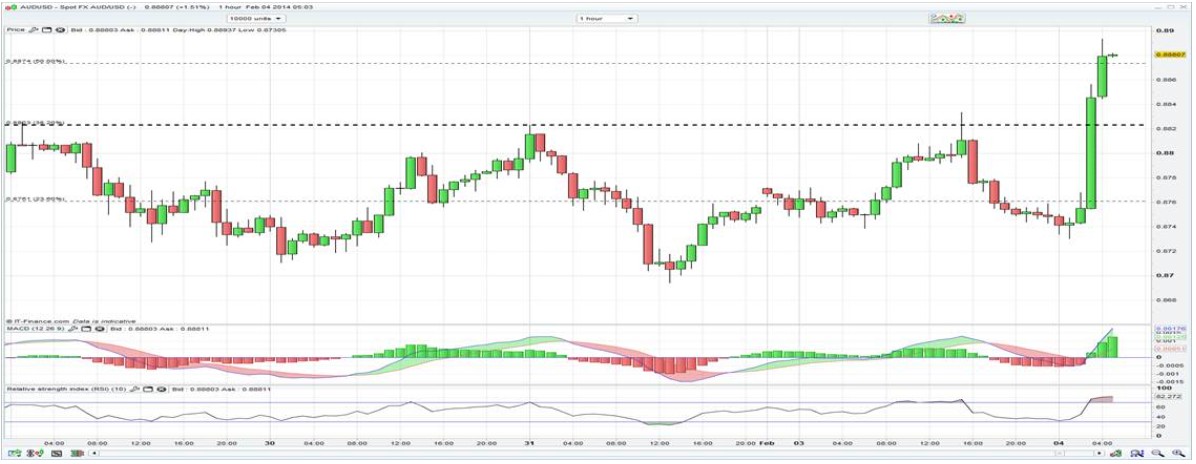
Sentiment continues to deteriorate in equities land, with Japan once again at the heart of the moves lower.
The market feels like it’s been hit by a freight train and traders are asking what exactly is going on. What started out as a profit taking exercise has steamrolled into something far more substantial, with trend-breaks seen in a number of asset classes and 200-day moving averages either being broken or about to be tested. Naturally we need to see these averages head lower (at the moment they are still heading up) to define a new trend, but they are lagging indicators and the fast money would have already sold, or would be adding to bearish positions on these breaks.
Bonds have been heavily bid of late and in the case of the US, the flattening of the curve is there for all to see, with the difference between two- and ten-year treasuries moving from a 265 basis point spread to 228 basis points this year. Traders are buying assets with defensive qualities, such as sovereign paper, USDs, CHF and mainly the JPY, and once again emerging markets are simply being dumped by investors. The best performing currency against the JPY last night (in emerging markets) was the Romanian leu, and it felt like an all-out flight to safety.
US manufacturing to blame for the sell-off
Saying that, the deterioration in the ISM manufacturing survey was largely weather related and a more positive market may have looked through the numbers. Go back eight months, and we may have even seen global markets (including emerging markets) rally on such a weak number (as it would have kept the stimulus dream alive), but the Fed is not going to alter its less-loose bias anytime soon; not certainly on weather related issues. This of course makes the February series that much more important, but it also means Wednesday’s US services ISM is just as important, given the service sector’s significant contribution to the US economy. A good number here (or even an in-line number) could see some dip buyers emerge, but until then and until some sort of clarity emerges the buyers will step aside and the hedge funds will have an absolute field day shorting futures and stocks in this type of environment. It’s sort of like equity deflation; if uncertainty is rife, traders will step aside and hold off for better levels.
As highlighted in the previous report, Japan is in all out correction territory, and while the S&P had its last 10% correction in May 2012, the Nikkei has had three in that period. The index has to bounce soon, although I’d wait until it does and catch the bounce. The index is now three standard deviations from its 50-day moving average, and you have to go back to early 2011 to see that level of oversold conditions. We’ve seen USD/JPY recover from trading under 101.00, with many talking about a test of the 200-day moving average at 100.09 – a level the pair has been above since October. This is a story of Japanese funds continuing to liquidate foreign assets and repatriating funds home, and we should continue to see this highlighted in the weekly Ministry of Finance (MOF) fund flow data. I guess the falls in USD/JPY are also helped by the fact the premium the US ten-year treasury holds over the Japanese ten-year bond has fallen 33bp over the last month. I question whether there is also a fraction of the market really questioning whether the BoJ will actually ease further in April, which of course has been wide consensus for some time, while the weekend’s Tokyo elections are also a concern.
The ASX finding further sellers after the RBA meeting
The ASX found stability after the unwind, with traders undertaking fairly good two-way trade, although has fallen below the 5100 after the RBA removed its mild easing bias. If you take CBA for example we’ve actually seen better business on the buy side, with 67% of all opening positions going long (or looking to profit from a bounce). We’ve even seen good earnings from REA who produced a solid report, and while the stock is up 4%, on a more positive backdrop it could well have been up 8% or so. On the materials side, the opposite is true with BHP, with 63% of all trades today on the short side. Of course, now the story has shifted from a predominantly emerging markets narrative, to one of disinflation risks and growth concerns in developed markets, therefor you are going to see this space struggle. As I mentioned yesterday, copper looks fairly sick right now and has lost traction for nine consecutive days. Can we see a tenth straight day? It’s very modestly higher today, but clearly Dr copper is speaking out now.
The RBA meeting was significant because it removed its lose easing bias and showed no concern around emerging markets or the AUD being uncomfortably higher. The spike higher in the AUD against all G10 pairs was significant (with AUD/USD rallying over one cent) and anyone looking to sell the AUD in part of a central bank divergence trade has closed out rather quickly today.
(Hourly chart of AUD/USD)
European markets are going to get taken to the cleaners on open, with the S&P futures around 0.7% from the European cash close. The main event in town tonight will be the US CBO (Congressional Budget Office) releasing its annual budget and economic outlook, with an updated budget deficit for fiscal year. On the data side we get the US factory orders and these are expected to slide 1.8%. We also get to hear from Fed members Jeffery Lacker and Charles Evans who speak in US trade. Earnings wise European traders will be keen to look out for numbers from BP and BG group.
